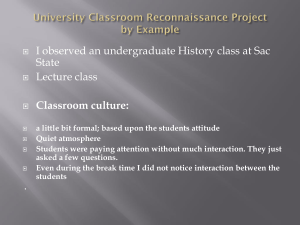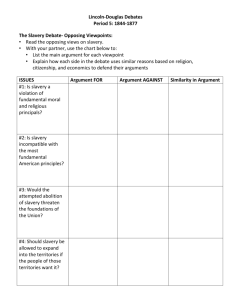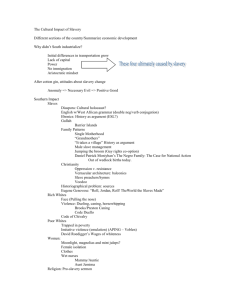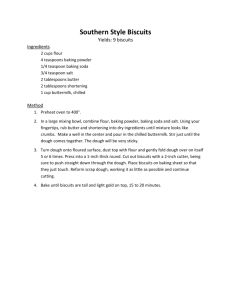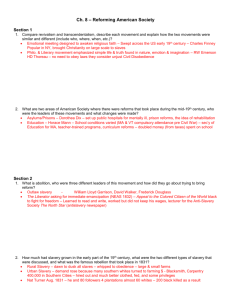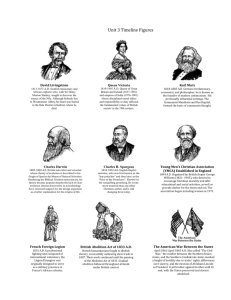Worksheet 3 – Products of Slavery
advertisement
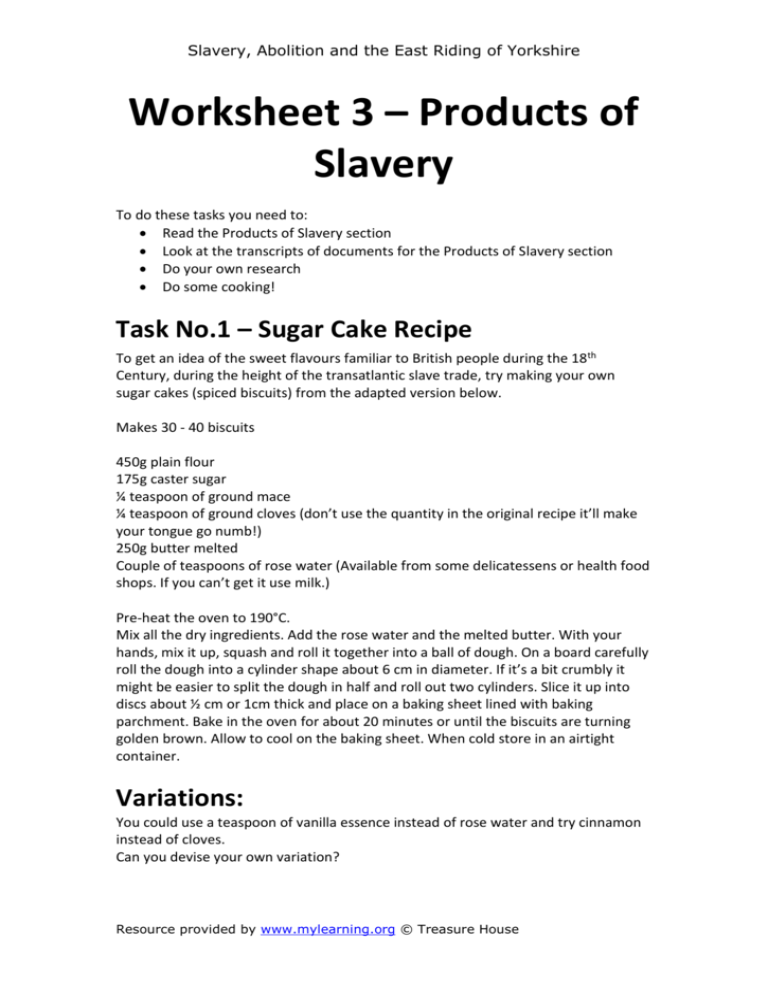
Slavery, Abolition and the East Riding of Yorkshire Worksheet 3 – Products of Slavery To do these tasks you need to: Read the Products of Slavery section Look at the transcripts of documents for the Products of Slavery section Do your own research Do some cooking! Task No.1 – Sugar Cake Recipe To get an idea of the sweet flavours familiar to British people during the 18th Century, during the height of the transatlantic slave trade, try making your own sugar cakes (spiced biscuits) from the adapted version below. Makes 30 - 40 biscuits 450g plain flour 175g caster sugar ¼ teaspoon of ground mace ¼ teaspoon of ground cloves (don’t use the quantity in the original recipe it’ll make your tongue go numb!) 250g butter melted Couple of teaspoons of rose water (Available from some delicatessens or health food shops. If you can’t get it use milk.) Pre-heat the oven to 190°C. Mix all the dry ingredients. Add the rose water and the melted butter. With your hands, mix it up, squash and roll it together into a ball of dough. On a board carefully roll the dough into a cylinder shape about 6 cm in diameter. If it’s a bit crumbly it might be easier to split the dough in half and roll out two cylinders. Slice it up into discs about ½ cm or 1cm thick and place on a baking sheet lined with baking parchment. Bake in the oven for about 20 minutes or until the biscuits are turning golden brown. Allow to cool on the baking sheet. When cold store in an airtight container. Variations: You could use a teaspoon of vanilla essence instead of rose water and try cinnamon instead of cloves. Can you devise your own variation? Resource provided by www.mylearning.org © Treasure House Slavery, Abolition and the East Riding of Yorkshire Task No.2 – Abolition Manifesto A manifesto is a public declaration which sets out your principles, intentions and proposals. They are often used by political parties or governments. Take on the role of the government of the time and write a manifesto to abolish the use and ownership of slaves. Things to think about: You could have an introductory paragraph to summarize your ideas. Your proposals could be in bullet point form. What would you intend would happen to the slaves once they were freed? Would you provide any support for the former slaves? Would you provide any support for plantation owners to continue production without the use of slave labour? Find out what the government actually decided to do in 1833 in the Abolition of Slavery Act. You will need to do your own research. There is a useful summary at www.victorianweb.org/history/antislavery.html but there are lots more useful websites and sources of information. Would you propose to abolish slavery differently? Extension Activity - Citizenship Fair Trade If you did the extension activity about slavery today in Worksheet 1 you will be aware that there are many unfair and slave-like working practises taking place in the world today. Choose one issue and suggest what could be done, by governments and/or international organisations to make businesses and their suppliers treat their workers fairly and humanely. For example: Poor conditions for workers in the manufacture of low-cost clothing. Things to think about: You could write your proposals as a manifesto or as information for a campaign organisation/website. Have a look at a campaign website for ideas about setting information out, e.g.: www.antislavery.org Resource provided by www.mylearning.org © Treasure House
